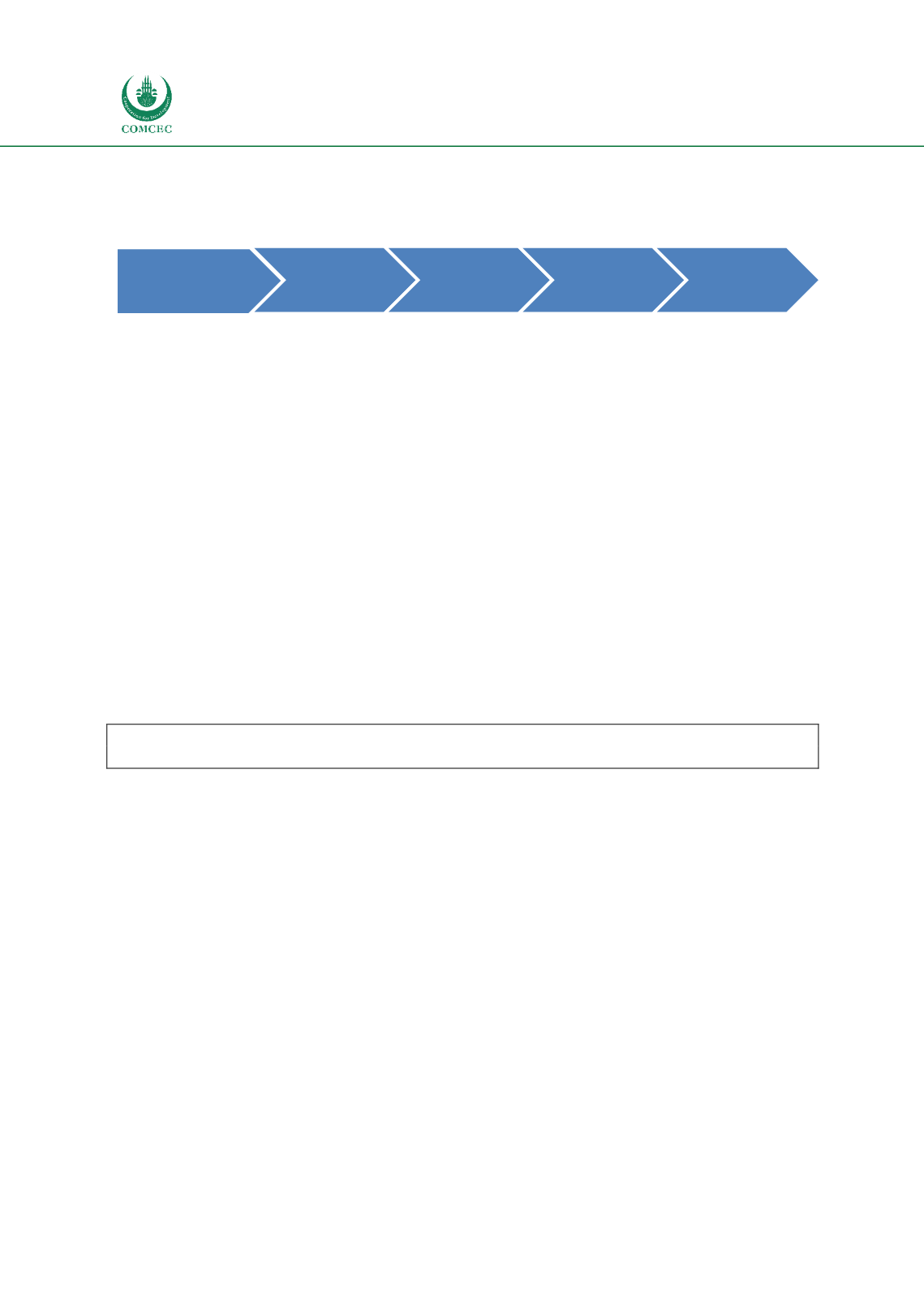

Facilitating Trade:
Improving Customs Risk Management Systems
In the OIC Member States
152
CRM processes - Analyze AS-IS, (4) Design of new CRM processes - Design “TO-BE” and (5)
implementation/integration of the proposed changes.
Figure 50: Process Re-engineering Steps
Source Author’s compilation
Policy Option 8: Integrate strong CA HRM Strategic Planning Process
; The HRM Strategy
and annual Training Plans should be developed and adequately aligned to the Customs Business
Strategy. The Training Strategy should ensure the provision of required skills and IT support for
business capabilities defined with the strategic goals and objectives. Both HR and LE/CRM
Strategies should provide sustainable development of business capabilities required to achieve
the strategic goals and objectives.
Policy Option 9: Ensure continuous HR development and career advancement
;
Continuous
HR development and career advancement will depend on:
Recruitment process that will need to take into consideration Intelligence and CRM
competencies;
Definition of clear roles and responsibilities to coordinate work and eliminate
inefficiencies and ensure effective resource allocation;
Develop and implement training on: the CRM and intelligence function, analysis
purposes as required, counter-terrorism issues, use of non-intrusive inspection
equipment, and radiation detection;
Training on the AEO concept and awareness/training programmes as required.
Box 10: Turkey Customs Continuous human resource development
Turkey CRM staff with advanced knowledge of risk analysis tools and techniques; most of them
have an engineering background.
Policy Option 10: Development and implementation of training programme for customs
staff (e.g., risk management, counter-terrorism issues, use of non-intrusive inspection
equipment, radiation detection)
; in planning for implementation of CRM and facilitation
initiatives, the CAs needs to conduct a core competency analysis of current staff to ensure staff’s
capacity to correctly employ security methods. The CAs need to establish the necessary skills,
competencies, and qualifications for staff dedicated to CRM and control.
CAs needs to identify the core competencies of its staff and measure against identified needs in
respect of risk management. A training strategy that encompasses risk management and
security training/education should be devised. Awareness raising training in risk management
should be provided to key staff, and in due course cascaded down to the rest of the customs
officers. The CRM Departments should develop their in-house training manuals for risk
management and trade facilitation initiatives.
Policy Option 11: Develop and review CRM processes and integrate them into the other
CA processes
;
an efficient CRM requires a clear definition of all necessary processes to cover all
stages of the CRM cycle. Development of CRM
processes should start at the top-level, focusing
on the legal environment, policy, and strategy. The CRM processes should be broken down into
sub-processes and procedures with subsequent action steps
(Figure 26). This is not related only
to the CRM, but to the entire CA as an organizational system.
Identify
Core BPs
Develop
“as-is”
Analyze
“as-is”
Design
“to-be”
Test &
Comm.
















